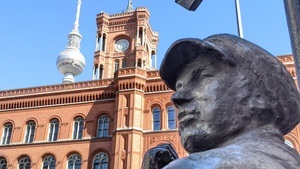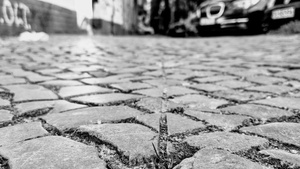Sabar, Polyrhythm, and the Politics of Body Movement: Sabar Workshop
In the organizer's words:
Following the well-attended Sabar workshops in 2024, Haus der Kulturen der Welt (HKW) is continuing the drum and dance workshop series Sabar, Polyrhythm, and the Politics of Body Movement under the direction of Nago Guèye Koité & SAF SAP.
Originating on the Senegalese coasts, Sabar is a sound language that has grown out of the oral traditions of the Wolof, Lébou and Sérère communities. The word comes from Wolof and refers to both the individual drumming instrument and its ensemble, the drumming style, the sensual dance and the popular celebration that often takes place as part of important social events such as naming ceremonies, weddings and initiation rituals.
Drumming and sabar, which is predominantly practiced in griot families, are traditions that constitute a cornerstone of Senegalese oral history. Also known as storytellers, the figure of the griot plays an important social role: Messenger, mediator, advisor, organizer. Traditionally, Sabar gatherings were planned and organized by a griot in close coordination with male drummers, who had the knowledge of how to activate the sound power of the drums; women, who took care of the social aspect of the gathering and the organization of clothing; and younger people, who were often more active when it came to spatial organization, helped out. Sabar is also known as a spiritual practice and was used in healing ceremonies where the drums served as a connection to higher spirits. Accordingly, the sabar never takes place before the obligatory baak call, with which the ancestors are greeted.
The sounds from each vibrating drum circulate through all the people present in the circle. Although the dancing part of the sabar emanates from the individual standing at the center of the circle, the overall choreography grows through collective movements between duos, trios and more. The polyphony of collective drumming aims to harmonize the body with the rhythm of the drums and encourage a strong exchange with the beats presented. Visually, it can look like the dance is following the rhythm, but the intention is to have different sonic rendezvous led by the lead drummer.
The etymology of the word "sabar" is derived from the Wolof word "sabal", which refers to a bird call or song. Based on this root word, the sounds of the sabar include a mixture of staccato, glissando, vibrato, whistling and warbling bird calls, to name but a few. When the sabar dance is activated by the drumming, its movements resemble those of a fast-running bird, creating a series of frenetic and sometimes sensual bodily expressions.
Bringing the Sabar traditions to HKW is a contribution to the Politics of Rhythm project, which was initiated with the bullerengue workshops in June 2023 at the house. It is about HKW's aim to welcome technological forms of collective movement as practices of togetherness and liberation of the body.
Public events will take place in French and German and will be translated into both languages.
Workshops will be held in German, French and Wolof, with language assistance available.
Limited number of participants, registration possible at any time.
If you are interested, please send an e-mail to sabar@hkw.de with the subject 'Participation' and indicate which workshops you would like to attend.
This content has been machine translated.Price information:
If you are interested, please send an e-mail to sabar@hkw.de with the subject 'Participation' and indicate which workshops you would like to attend.














